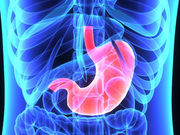Triglyceride disposal and acylcarnitine production during lipid overload improved with weight loss
MONDAY, Aug. 28, 2017 (HealthDay News) — Remission of type 2 diabetes (T2D) following biliopancreatic diversion with duodenal switch (DS) is associated with increased disposal of triglycerides (TG) and acylcarnitine production during lipid overload, according to a study published online Aug. 23 in Diabetes.
Thomas Grenier-Larouche, from the Université de Sherbrooke in Canada, and colleagues examined the longitudinal contribution of adipocyte size reduction and fatty acid metabolic handling to T2D remission following bariatric surgery.
The researchers found that during intravenous lipid overload, severely obese participants with T2D displayed hypertriglyceridemia and excessive systemic lipolysis. The whole-body glycerol turnover was normalized three days after DS, and was associated with lower homeostatic model assessment of insulin resistance index. An excess weight loss of 84 percent was achieved on average 12 months after DS. In T2D, smaller subcutaneous adipocyte size predicted a better glycemic control. TG disposal and acylcarnitine production during lipid overload correlated with improvement in weight loss and muscle insulin sensitivity. Systemic non-esterified fatty acid fluxes and spillover remained similar, indicating that the increased storage capacity compensated the decrease in fat mass during weight loss.
“In conclusion, T2D remission after DS is mainly associated with greater circulating TG disposal, lower systemic lipolysis, and better fatty acid handling by lean tissues,” the authors write.
Copyright © 2017 HealthDay. All rights reserved.








